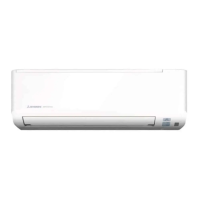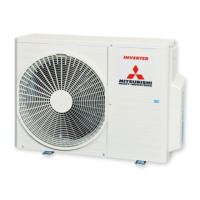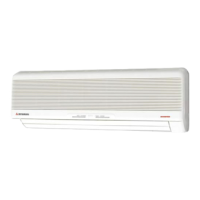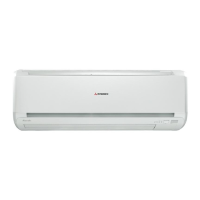
Do you have a question about the Mitsubishi SKM25ZA and is the answer not in the manual?
| Cooling Capacity | 2.5 kW |
|---|---|
| Heating Capacity | 3.2 kW |
| Power Supply | 220-240 V, 50 Hz |
| Type | Split System |
| Indoor Unit Noise Level | 21 dB |
Details the system's key operational advantages and capabilities.
Explains the nomenclature used for product identification and characteristics.
Lists technical data and performance metrics for indoor and outdoor units.
Defines operating conditions and constraints for the air conditioning system.
Provides detailed physical measurements for all unit components.
Illustrates the refrigerant and drain pipe configurations for the system.
Offers guidance and correction factors for selecting the appropriate system capacity.
Details wiring diagrams, symbols, and color coding for system connections.
Explains the functions and indicators of the wireless remote control unit.
Describes the operational lights and status indicators on the indoor units.
Details the use of the manual switch for unit operation and reset.
Explains how the air outlet flap adjusts for optimal airflow in different modes.
Describes how to set timers for automatic operation based on room conditions.
Outlines critical warnings and cautions for safe installation and operation.
Provides instructions for mounting and securing the indoor units.
Details the installation process for ceiling-recessed indoor units.
Guides on mounting the remote control holder and the wireless receiver.
Covers location selection, mounting, and securing of the outdoor unit.
Instructions for configuring voltage settings on the control board.
Details power connection, circuit breaker, and earth leakage breaker requirements.
Covers pipe diameter, length limits, and connection procedures.
Outlines procedures for initial system checks and customer guidance.
Instructions for installing optional accessories like air outlet ducts.
Details the installation and connection of the optional drain up kit.
Provides a systematic approach to diagnosing and resolving system issues.
Explains error codes indicated by unit lamps and LEDs for fault identification.
Details specific checks for thermistor errors, current cut, and other faults.
Guides on verifying remote controller functionality and diagnosing defects.
Outlines checks for fuses, transformers, and circuit boards in indoor units.
Steps to inspect the inverter for common failure points.
Covers essential maintenance tasks like evacuation and refrigerant charging.











